Known as the Sunshine State and for having the most golf courses — if not the most oranges — than any other state in the U.S., Florida is also home to a diverse landscape of both people and nature. Aside from being a melting pot of cultures and having some of the most beautiful beaches, Florida also has tons of wonderful and exotic animals that can mesmerize tourists and locals alike.
If you’re planning to visit Florida, don’t just go for the sun, sand, and seas — drop by the many zoos in Florida, too! Below is a list of the best zoos in Florida that you can definitely enjoy with family and friends.
Cities in Florida That Have Zoos
Tampa Zoos
Popular for its many tourist attractions, Tampa has more than a handful of zoos that you can visit. Two of these include Busch Gardens Tampa and ZooTampa at Lowry Park.
Busch Gardens Tampa

Busch Gardens Tampa, which is hailed as one of the largest zoos in North America, is also among the handful of U.S. facilities to earn a Humane Certified seal from the world’s largest certifier of animal welfare, American Humane.
More than 200 animal species can be seen thriving in Busch Gardens Tampa, which is also named by U.S. News and World Report as one of the best zoos in the country. One of its featured animal experiences is the Serengeti Plain, which lets visitors watch the animals roam in the 65-acre natural habitat. You can also ride the Serengeti Express, a relaxing, open-air train ride that takes visitors around stops such as the Congo, Nairobi, and Stanleyville.
Other park tours and behind-the-scenes animal encounters can also be enjoyed in Busch Gardens Tampa, letting visitors get acquainted with different types of animals — from some of the most interesting species to the most endangered. The zoo also has African safari-themed rides, as well as a state-of-the-art Animal Care Center, which has been featured in the hit TV series “The Wildlife Docs.” Because of its size and the sheer number of activities available, you might want to reserve more than a day to enjoy all that Busch Gardens Tampa has to offer.
ZooTampa at Lowry Park

Of course, there is also ZooTampa at Lowry Park, which receives close to a million visitors every year. The zoo began as far back as the 1930s, when it was still a municipal department housing a small number of animal species native to Florida. By 1988, it grew to a 24-acre facility that was opened to the public after earning its accreditation from the Association of Zoos and Aquariums. Currently, the facility encompasses 56 acres of natural animal exhibits and tropical gardens that serve as the home of more than a thousand animals.
When visiting ZooTampa at Lowry Park, guests can upgrade their tickets to enjoy signature encounters, which include Indian Rhino Feeding, the African Elephant Backstage, Aldabra Tortoise Encounter, Giraffe Backstage Encounter, Koala Photo Encounter, African Penguin Backstage, and the Southern White Rhino Encounter. The zoo also has its own app and a website feature that can help you plan your day around the facility. Kids can also learn more about wildlife and preservation at the zoo’s Florida Environmental Education Center, or “Zoo School,” which is a full-time, fully licensed child care center that is the first of its kind in the U.S.. The center has educated more than 1.8 million children in Tampa Bay since it was established in 1988.
Melbourne Zoos
Brevard Zoo

Opened in 1994, Brevard Zoo in Melbourne, Florida began with a small group of people who envisioned building a world-class zoo where people could learn about animals and nature. During its conceptualization stages, it received an outpouring of support from different groups, which enabled it to raise $3.5 million and recruited more than 16,000 volunteers, making Brevard Zoo the largest community-built zoo in the world.
Today, Brevard Zoo is home to more than 900 animals representing 195 species not only from Florida but also from various places across the globe, such as South America, Africa, Asia, and Australia. From the African Bullfrog to the Yellow-Naped Amazon, Brevard Zoo lets visitors get acquainted with these animals through different zoo adventures, explorations, and educational programs.
Some of the featured events and adventures in the zoo include the Giraffe Feedings, Kayaking Tour, Cape to Cairo Express, Rhino Encounters, Paws On, and Tree Hugger. At the time of writing, Brevard Zoo has temporarily closed the Lorikeet and Cockatiel Feedings adventure due to avian flu being detected in Brevard County. There are also other enriching experiences that kids, families, and groups could enjoy as the zoo also offers a variety of programs, events, opportunities for teens to volunteer, and even birthday parties to be celebrated in the facility.
Coconut Creek Zoos
Butterfly World

Known as the “Butterfly Capital of the World,” it’s no surprise that Coconut Creek is home to Butterfly World, an aviary containing more than 20,000 live butterflies and hundreds of other exotic birds from all over the world. Visitors can explore Butterfly World’s beautiful botanical gardens, waterfalls, and tropical habitats while watching the live butterflies and birds from six giant-screened free-flight aviaries. At any time, guests can see around 50 butterfly species and can view more than 150 species within the course of a year.
Aside from the aviaries, Butterfly World also has a butterfly museum, bug zoo, and a gift shop that features exclusive, one-of-a-kind butterfly- and nature-themed decor. Butterfly gardening plants and other outdoor decorative items are also sold by the gift shop, which are enjoyed by guests who wish to build their own Butterfly World in their backyard. Established in 1988, Butterfly World remains as a popular and marvelous zoo that offers visitors a unique and educational experience. Other than being able to view the hundreds of butterfly species, Butterfly World also features other activities that kids and families can enjoy, such as hand-feeding small parrots and lorikeets.
Sanford Zoos
Central Florida Zoo and Botanical Gardens

With over 106 acres of land, the Central Florida Zoo and Botanical Gardens in Sanford is home to more than 350 animals that represent over a hundred different species. It began as the Sanford Zoo in 1923, when a traveling circus gave a rhesus monkey to Sanford’s Elks Club. Over time, more animals were added to the collection, such as a female monkey, a bulldog, skunk, opossum, squirrel, and a raccoon.
By 1975, the zoo received a 106-acre donation from Seminole County, where the zoo’s current location stands. In 2007, the Central Florida Zoo became the Central Florida Zoo and Botanical Gardens. It also opened the Wharton-Smith Tropical Splash Ground in the same year, which remains as one of the zoo’s featured attractions alongside the Seminole Aerial Adventures–Zipline Courses, Barnyard Buddies, Giraffe Feeding, Rhinoceros Encounters, and others.
Some of the animals you can find at the Central Florida Zoo and Botanical Gardens are amphibians, birds, invertebrates, mammals, and reptiles, including the Florida black bear and the American alligator. With the variety of animals it houses, the zoo offers different animal encounters that last around 30 minutes each, giving visitors of all ages a chance to meet and learn about creatures from all over the world.
Bay Lake Zoos
Disney’s Animal Kingdom in Bay Lake

Disney’s Animal Kingdom in Bay Lake is perhaps one of the most popular and the biggest zoological theme parks in the world. Built on 580 acres of land, Disney’s Animal Kingdom opened on Earth Day of 1998 and features a combination of Disney’s traditional attractions alongside live animal exhibits that represent hundreds of different species. More than just for show, Disney’s Animal Kingdom has received accreditation from the Association of Zoos and Aquariums and the World Association of Zoos and Aquariums, which certify that their facility is up to par with standards set for animal education, conservation, and research.
Currently, Disney’s Animal Kingdom has six areas that each feature animal- and nature-themed attractions, some of which are inspired by movies associated with the studio. The newest addition to these attractions is Pandora: The World of Avatar, which takes visitors floating down the bioluminescent Na’vi River or aboard the back of flying banshees in Avatar Flight of Passage.
Other areas in Disney’s Animal Kingdom also include The Oasis Exhibits, which feature wallabies, giant anteaters, barking deer, and exotic boars; Discovery Island, which is home to the iconic Tree of Life; the Kilimanjaro Safaris and the Gorilla Falls Exploration Trail, where visitors can witness exotic creatures roaming; the Festival of the Lion King broadway-style show; the Kali River Rapids and Maharajah Jungle Trek in the Asia section of the park; and DinoLand U.S.A., which remains a hit among young visitors.
Fort Lauderdale Zoos
Flamingo Gardens
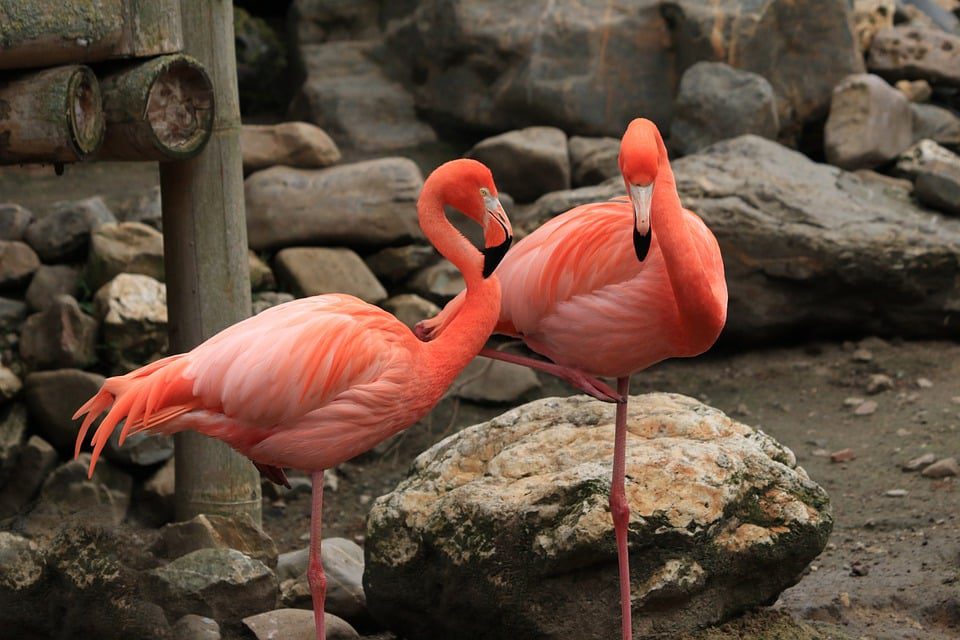
Though it’s called Flamingo Gardens, this botanical garden and wildlife sanctuary in Fort Lauderdale doesn’t just have flamingos in its 60-acre tropical paradise. It’s also home to one of the largest collections of wildlife native to Florida, including alligators, bobcats, bears, eagles, panthers, otters, and peacocks. The Flamingo Gardens Everglades Wildlife Sanctuary also houses birds and animals who have been injured or can never be released back to the wild.
Originally a citrus orchard, Flamingo Gardens — formerly Flamingo Groves — was founded by Floyd L. and Jane Wray in 1927. After the first citrus tree was planted in February 1927, Flamingo Gardens eventually grew and became home to 60 varieties of citrus, as well as rare tropical fruit, and flowering shrubs and trees.
The Flamingo Gardens is open to the public, offering visitors a chance to encounter over 250 species of birds — 50 of which are native to Florida — in its 25,000-square-foot aviary. It also has different habitats for animals such as the American crocodile, the Florida black bear, otters, panthers, and bobcats. Other animal encounters include going through the Bird of Prey Center, the Flamingo Pond, Parrot Aviary, the Rookery, and the Turtle Walk.
Orlando Zoos
Gatorland
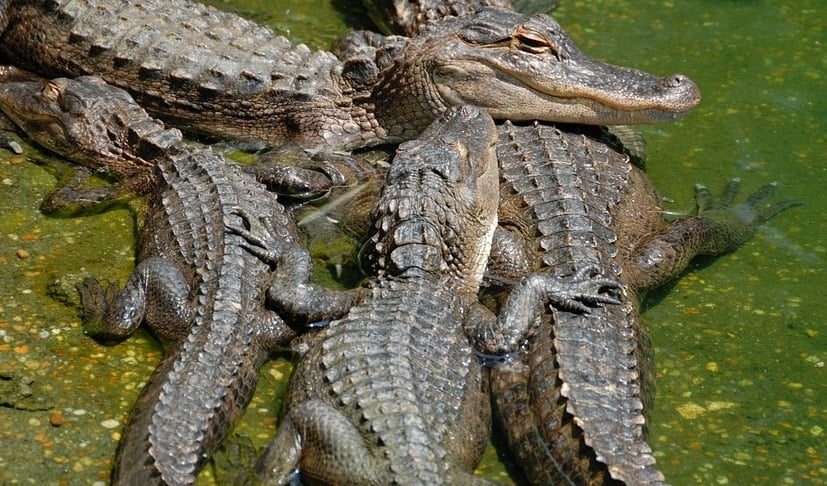
While Orlando is typically associated with Disney World, the world-renowned theme park isn’t the first one to be established in “The City Beautiful.” Surprisingly, the first theme park to open in Orlando was Gatorland in 1949 — 22 years earlier than Disney World’s opening in 1971. As the “Alligator Capital of the World,” Gatorland is home to more than 2,000 American alligators, including extremely rare varieties such as albino and leucistic alligators. That’s not all — Gatorland also has other animals, including crocodiles, wild cats, birds, snakes and critters, and tortoises.
One of the most iconic activities in Gatorland is the Screamin’ Gator Zip Line, which takes guests soaring along zip lines that are 230 to 500 feet long. Guests can even launch themselves from towers — up to seven stories high — and zip line through some of the park’s main attractions, such as the Cuban and Nile crocodiles, as well as the Alligator Breeding Marsh, which features over 130 giant alligators. Similarly, the Gator Gauntlet Zip Line lets mobility-challenged guests enjoy these thrills through the single and accessible zip line ride.
While Gatorland can seem like a place that isn’t for the faint of heart, you’d be surprised to know that many of its other activities, such as the Gator Night Shine, are totally kid-friendly and can be enjoyed by visitors of all ages.
Loxahatchee Zoos
Lion Country Safari

If you’ve ever wanted to visit a safari, you don’t have to travel all the way to Africa as Loxahatchee has its very own Lion Country Safari, which has over 600 acres of natural land and more than 900 resident animals. The four-mile safari lets visitors encounter a wide variety of free-roaming animals from six continents, from herds of zebras to rhinos, giraffes, and, of course, lions.
Inside their vehicles, park guests can drive through the seven habitats, namely Las Pampas, Ruaha National Park, Kalahari Bushveldt, Gir Forest, Gorongosa Reserve, Serengeti Plains, and Hwange National Park. Each habitat is a home to different kinds of animals, some of which may be less-known to guests such as the Brazilian Tapir, Greater Kudu, Nile Lechwe, Scimitar-horned Oryx, Wildebeest, and White Handed Gibbon.
Aside from driving through the safari, visitors can also enjoy premium park experiences, namely the Giraffe Painting Experience, VIP Tour, “Flamingo Mingle” Experience, “Birds and Brushes” Experience, and the Toddler Tour Petting Zoo Experience. Rides and attractions for kids and adults alike are also present in Lion Country Safari, including the Flying Elephant Ride, Carousel, Rio Grande Train, Safari Splash Playground, Safari Water Slides, Safari Falls, Gemstone Mining, Maze, Mini Golf, Fun Slide, and many others.
Gulf Breeze Zoos
Gulf Breeze Zoo

In 2008, the Gulf Breeze Zoo — formerly known as Zoo Northwest Florida — would have been permanently closed had it not been for the zoo’s current CEO, Eric Mogensen. Due to the economic downturn at the time — which was aggravated by damages from Hurricane Ivan — more than 800 animals in the zoo were at risk of losing their home. However, with the consolidated efforts of the staff, then-owners, and Mogensen, the Gulf Breeze Zoo completed renovations and were able to keep the animals safe and well cared for.
Today, the Gulf Breeze Zoo has an annual visitor count of over 200,000 and is partnered with several top conservation programs. The 50-acre sanctuary is also home to over a thousand animals from almost every continent. Here, you can find animals of all shapes and sizes, from tiny one-ounce budgies to colossal 6,000-lb. rhinos. There are tons of mammals, reptiles, and birds visitors can encounter at the zoo, including featured animals such as giraffes, gorillas, hippos, orangutans, and rhinos. When visiting the Gulf Breeze Zoo, you can also enjoy several attractions, which include Animal Feeding and Encounters, the Budgiery Adventure Aviary, Elevated Boardwalk, Farm, the new Mining Sluice, and the Safari Express Train Ride.
Jacksonville Zoos
Jacksonville Zoo
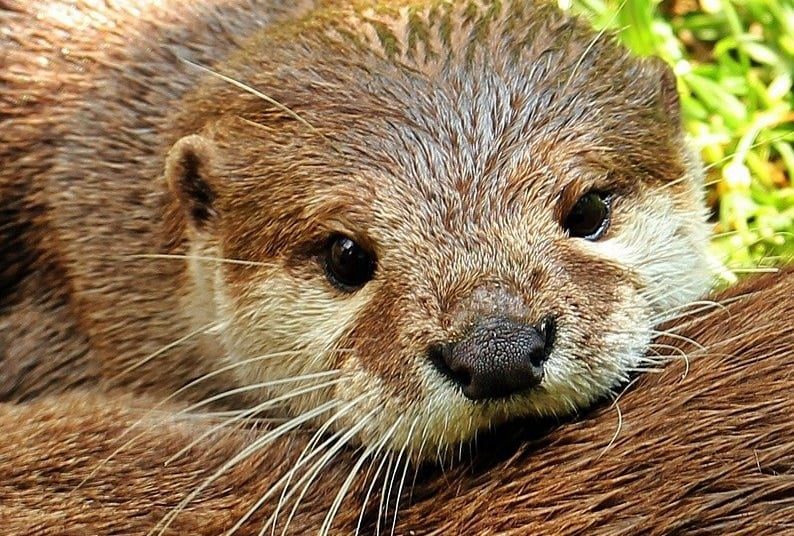
The Jacksonville Zoo and Gardens in Jacksonville, FL, enjoys the distinction of being one of the only seven zoos in the U.S. that has an animal wellness team. It is also the only walking safari in Northeast Florida. The 89-acre park has over 2,000 rare and exotic animals and 1,000 plant species that visitors can encounter, explore, and learn about.
When visiting the Jacksonville Zoo, you can enjoy a variety of interactive and educational wildlife experiences that feature different exhibits, such as the African Forest, Africa Loop, Asian Gardens, Asia Loop, Amphibian Conservation Center, Play Park, Range of the Jaguar, Wild Florida, Stingray Bay, and many more. The most recently updated animal exhibits are the Land of the Tiger and the African Forest.
The lush botanical gardens also feature several exhibits that can introduce park-goers to over a thousand plant varieties. The garden exhibits include the Savanna Blooms, Gardens at Trout River Plaza, Riverview Gardens, Gardens at Range of the Jaguar, Asian Bamboo Garden, and Rivers of Color Garden. At the Jacksonville Zoo and Gardens, visitors can also rent out strollers, scooters, and wheelchairs to easily navigate the park. Aside from the animal and plant exhibits, the park also has a collection of sculptures, monuments, and literary pieces on display.
Miami Zoos
Tourists know Miami for its white-sand beaches and warm climate, but did you know that the city also has three amazing zoos you can visit? If you’re planning a trip to “Magic City Miami,” you’ll have a lot of fun exploring Jungle Island, Monkey Jungle, and Zoo Miami.
Jungle Island
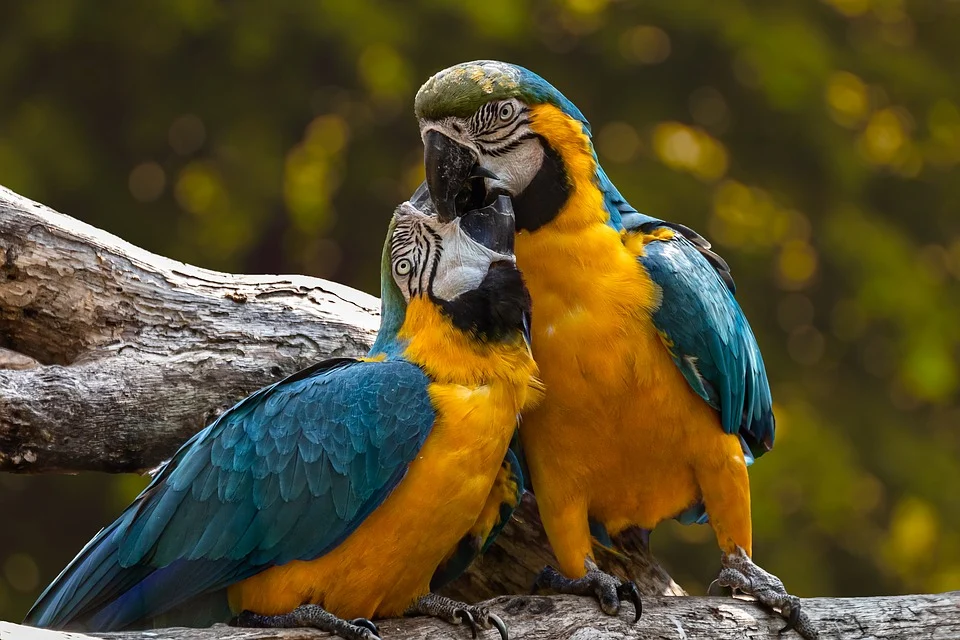
Jungle Island — formerly known as Parrot Jungle Island — is set to reopen this year with a 300-room hotel just four minutes away from the park itself. The 350,000-square-foot, six-story Jungle Island Hotel will begin construction once the main attraction has reopened.
At the time of writing, Jungle Island still hasn’t opened its doors to the public, though the website promises new adventures once it resumes operations. The park closed because of the COVID-19 pandemic, but it appears to accept bookings for events such as weddings, bar mitzvahs, company picnics, and the like. Animal exhibits and shows are mentioned as part of the events package, so if you’re planning to see what Jungle Island offers, you might want to try booking a daytime or evening event. It was initially announced that Jungle Island will reopen in January 2022, but the date seems to have been pushed back — likely because of current plans to construct Jungle Island Hotel.
Monkey Jungle

On the other hand, Monkey Jungle is another eco-park you can visit in Miami. Established in 1935, this 30-acre park lets guests explore a natural subtropical forest where they can have close encounters with different species of monkeys. However, due to the COVID-19 pandemic, the park only accepts reservations, so be sure to book in advance.
If you’ve secured a reservation, you can visit the park andhave the Jungle Show Guides escort you — along with a small group of explorers — through the different natural habitat areas, the Wild Monkey Pool, and other sections of the park. Monkey Jungle also features an eco-show where park-goers can have personal encounters with the monkeys. The highlight of this eco-show is the rainforest showcase, which lets visitors see a troop of capuchin and squirrel monkeys up-close.
Monkey Jungle also hosts birthday parties in its Safari Base Camp. Aside from admission to the park, the birthday party package also includes pizza or hot dogs with soft drinks and chips, food for the monkeys, a “Gorilla Goody Bag,” and a special t-shirt for the birthday celebrator. Those who have the birthday party package are also treated to all the regular Monkey Jungle presentations.
Zoo Miami

Of course, you shouldn’t forget Zoo Miami, which is the largest and oldest zoological garden in Florida, as well as the fifth largest zoo in the country. Also known as the Miami-Dade Zoological Park and Gardens, Zoo Miami is also the only subtropical zoo in the continental United States. Established in 1948, the zoo currently occupies 750 acres of land and four miles of walkways. It is home to more than 3,000 animals representing over 500 different species, 130 of which are considered as either endangered or critically endangered. Zoo Miami also has a collection of more than a thousand species of plants.
With the sheer size of the zoo, as well as the number of plants and animals that visitors can encounter, it can take more than a day to truly explore and appreciate the 100 special exhibits showcasing all these species and their natural habitats. When visiting Zoo Miami, guests can enjoy a host of activities, which include animal feedings and encounters, rides, and presentations. You can also experience the Meet the Zookeeper program and the Animal Fun Factory. Park-goers can also choose to explore Zoo Miami on foot or while riding some of the available vehicles, such as the safari cycle, tram tour, or monorail.
Key West Zoos
Key West Butterfly and Nature Conservatory

If you’re looking forward to a relaxing time in Key West, be sure to take a stroll along the tropical paradise in the Key West Butterfly and Nature Conservatory. Here, you can find 50 to 60 butterfly species from all over the world alongside over 20 exotic species of birds. This climate-controlled habitat also features a variety of flowering plants, trees, and cascading waterfalls — all of which visitors can walk through and experience!
The Learning Center introduces guests to the world of butterflies through a 15-minute film describing the life cycle of these marvelous creatures, including interesting facts about them. You will also see a wall-sized mural map that illustrates the different species of butterflies, their countries of origin, anatomy, physiology, and even facts about the Monarch migration. Visitors are also treated to a rare, up-close encounter with live caterpillars feeding and evolving on their host plants.
Aside from the Learning Center, Key West Butterfly and Nature Conservatory also has the Wings of Imagination butterfly gallery, which has beautifully preserved butterflies suspended in acrylic shadow boxes. Other activities in the conservatory also include the “Flamingle,” where guests can mingle with the resident flamingos, and the Twilight Tours, which lets visitors witness how the birds sing and the butterflies dance after sundown.
Naples Zoos
Naples Zoo
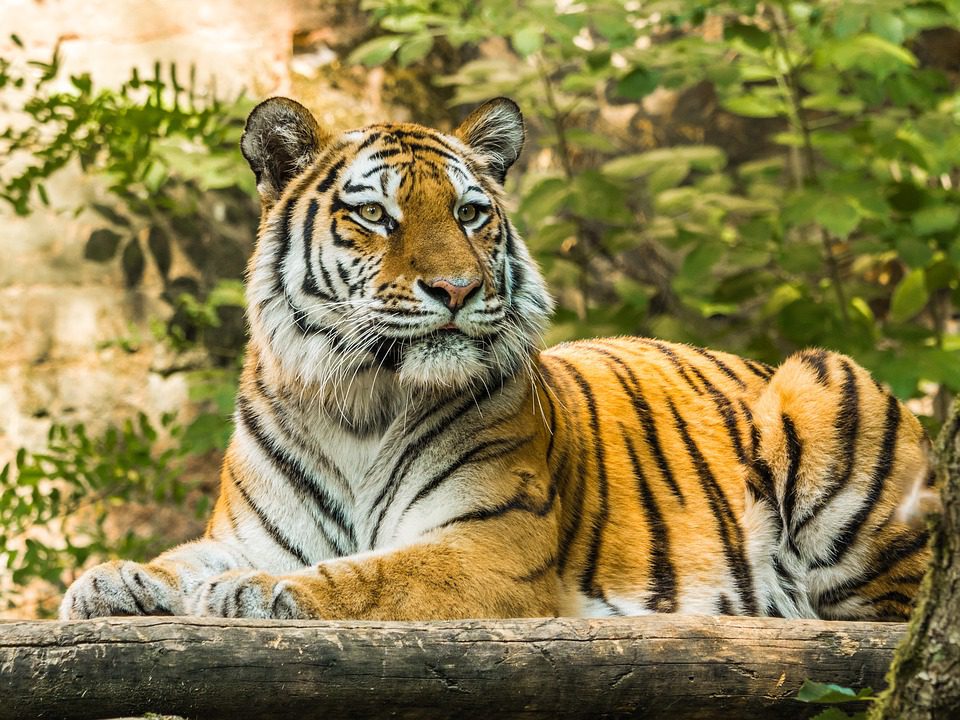
With its botanical garden founded in 1919, the Naples Zoo celebrates 103 years as a historic tropical garden and 53 years as a zoo. It’s rich not only in history, but it’s also teeming with exotic plants and wonderful wildlife. Because of its decades-old botanical collection, each exhibit featured in the zoo is carefully put together to avoid damaging any of the plants and trees. For visitors, this means that they get to experience close encounters with the animals — some of them being just a few steps away.
Animal programs and exhibits in the zoo are divided into three categories: birds, mammals, and reptiles. Some program animals may also be featured in exhibits, though program animals and exhibit animals are generally from different species. On the other hand, botanical exhibits include the History of the Garden, Feature Plants, Garden Photos, Arbor Day, 100 Years as a Garden, and the Backyard Habitat. Until April 17th, guests can also enjoy one of the zoo’s special events, which is the BrickLive Supersized Creatures. This traveling exhibition features over 35 towering animal sculptures built with colored bricks — a sure hit with the kids! Some of the supersized creatures included in BrickLive are a 12-foot tall tarantula, a five-foot tall praying mantis, and a four-foot tall honey badger.
West Palm Beach Zoos
Palm Beach Zoo

The Palm Beach Zoo and Conservation Society in West Palm Beach has evolved into a major attraction of the city in the last 50 years. What started as a landfill and tent city campground eventually became the zoo that it is today. It began with Paul Albert Dreher, a landscaper who developed the 108-acre Bacon Park into what was eventually called the Dreher Park Zoo in 1963.
Over the years, the zoo underwent major improvements when management was transferred to the Zoological Society in 1971. By 1997, the zoo changed its name to the Palm Beach Zoo at Dreher Park — later shortened to Palm Beach Zoo. To further align with its mission of conserving animals, Palm Beach Zoo became the Palm Beach Zoo and Conservation Society in 2014.
Today, the zoo is home to over 500 animals and receives around 300,000 visitors each year. From the Aldabra tortoise to the white alligator, the zoo has over 190 animal species on 23 acres of land. Visitors can go through the four sections of the zoo, which are divided into the Tropics of the Americas, The Islands, Florida Wetlands, and Asia. To make your exploration more comfortable and convenient, the Palm Beach Zoo and Conservation Society also offers wagon rentals — which can seat one or two children — as well as wheelchair rentals for the mobility-challenged.
St. Cloud Zoos
Reptile World Serpentarium

The Reptile World Serpentarium in St. Cloud might look like an unassuming building, but it actually houses over 80 species of snakes from all over the world — some of which are listed among the top 10 deadliest in the world. Established in 1972, the serpentarium houses the snakes in glass-fronted enclosures along a darkened corridor. Some of the species you can see in these enclosures include a King Cobra that’s over 13 feet long, a Black Mamba, and all four of the venomous snakes native to Florida. Other rare sightings include the East African Green Mamba and its West African cousin.
At any given time, visitors can view around 50 snakes on display, though there are also other animals that you can encounter. These include a Nile crocodile, a variety of lizard species, a 14-foot male gator and his mate, a passel of iguanas, tortoises, and a pond full of turtles. Aside from viewing the animals, you can also enjoy a handful of interesting and exciting activities in the serpentarium. One of these is the Venom Extraction Show, where guests can witness — behind the safety of a glass window — venomous snakes being taken from their display cases and coaxed into biting clear membranes stretched over various glass items so their venom can be extracted.
Other activities in the serpentarium include holding non-venomous snakes and baby alligators, turtle feeding, watching a snake swallow its food whole, and watching iguanas sunbathe.
Gainesville Zoos
Santa Fe College Teaching Zoo

As the only zoo on a college campus, visiting the Santa Fe College Teaching Zoo in Gainesville can be a unique experience. This 10-acre zoo is home to over 70 different animal species and is maintained by around a hundred students who are enrolled in the college’s Zoo Animal Technology program alongside 10 full-time staff members. It also has a 1/4 mile trail that takes guests through a wooded environment lined with mulch.
Native and exotic animal species reside in the zoo’s naturally shaded environment. Some of these animals are Bald Eagles, American alligators, white-throated capuchin monkeys, Asian small-clawed otters, Matschie’s Tree Kangaroo, and many more.
Activities in the zoo can let guests experience Ambassador Animal Encounters, the Galapagos Tortoise Encounter, and Spoonbill Feeding. The Ambassador Animal Encounters are a private encounter and subject to availability, so it is recommended to book two weeks in advance. To ensure the safety and well-being of the animals, their personal care schedules and willingness to participate are taken into account. You might not be able to hold the animals since they are more comfortable with the trained zookeepers, though there’s a chance you may be able to touch most or all of the animals that you encounter.
Sarasota Zoos
Sarasota Jungle Gardens
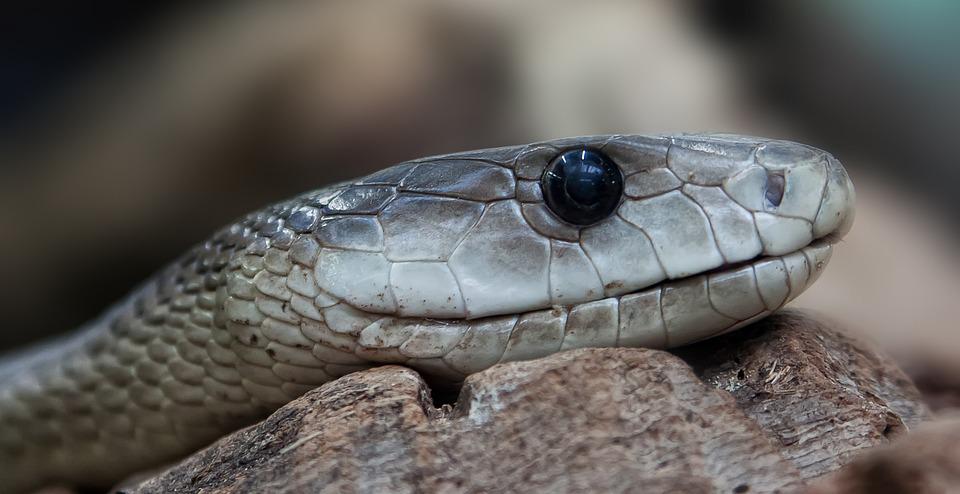
A 70-year old attraction, Sarasota Jungle Gardens in Sarasota began as a local newspaper man’s botanical garden project in the early 1930s. David Breed Lindsay — and his neighbor Pearson Conrad — turned the 10-acre subtropical jungle he purchased into a botanical garden. After some time, the manicured garden attracted curious and fascinated passersby. By New Year’s Eve of 1939, Sarasota Jungle Gardens was officially opened to the public.
Today, there are more than 200 native and exotic animals residing in the lush tropical garden. A favorite attraction among guests are Florida’s pink flamingos as they can be often seen greeting visitors personally. Other animals in the garden include parrots and macaws, small mammals, primates, iguanas, lizards, snakes, alligators, crocodiles, and other reptiles. Many of the garden’s residents are either rescued or donated animals.
Thousands of tropical trees, plants, and flowers can also be found within the garden. Some of the most notable plants in this collection include the rare Australian Nut Tree, Bunya Bunya tree, the largest Norfolk Island pine in Florida, the Peruvian Apple Cactus, and many more. Aside from the various animal exhibits and the botanical garden, visitors to the Sarasota Jungle Gardens can also enjoy four animal shows: the Multi-Species Animal Show, Jungle Bird Show, Wildlife Wonder Show, and Reptile Show.
St. Augustine Beach Zoos
St. Augustine Alligator Farm Zoological Park
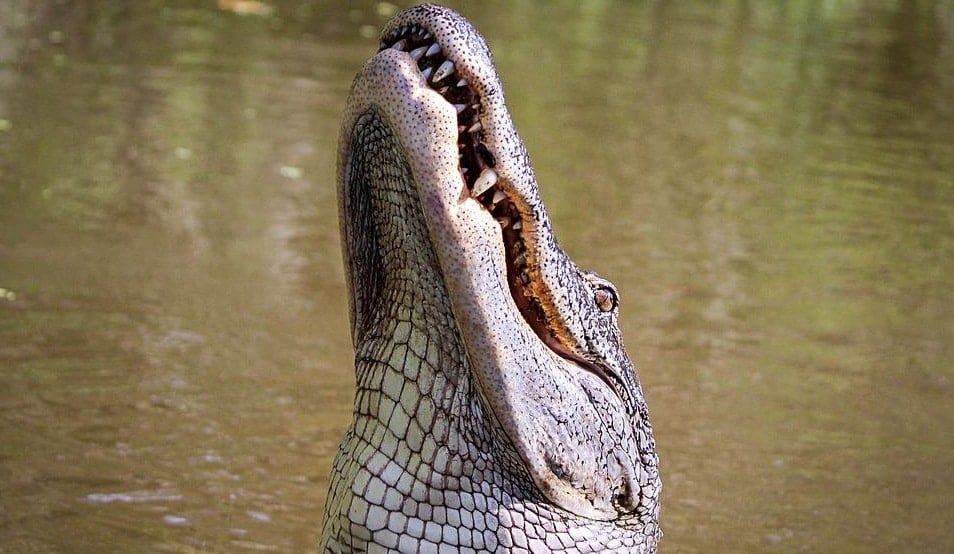
The St. Augustine Alligator Farm Zoological Park in St. Augustine Beach has a long and rich history that spans over 129 years. Founded in 1893, the park was originally located in South Beach but later moved to St. Augustine after experiencing a series of fires around the area and even a devastating storm in the 1920s.
Over the years, the park changed hands, and many improvements and attractions were added to what was once a modestly constructed zoo. It eventually gained popularity beyond St. Augustine, and the park has become the only facility in the world to exhibit living specimens of all currently known crocodile species. In celebration of its 129th anniversary, the park treated guests to the Oasis on the Nile exhibit — the largest one in a decade. From the two-level boardwalks, visitors can view 12-foot Nile crocodiles in the surrounding pool, as well as watch live feeding shows.
A favorite regular attraction in the park is the Crocodile Crossing, which was opened in 2011. Crocodile Crossing is St. Augustine Alligator Farm Zoological Park’s very own zip line ride, where participants can zip line over the entire park and get breathtaking perspectives while viewing live crocodiles, lemurs, tropical birds, and other animals in the park. If you decide to try out Crocodile Crossing, you can choose between two courses: the Nile River Course and the Sepik River Course. The Nile River course is the higher, more challenging zip line course that can last over 90 minutes. The Sepik River Course, on the other hand, is a lower and much shorter course, lasting approximately 45 minutes.
Palm Harbor Zoos
Suncoast Primate Sanctuary
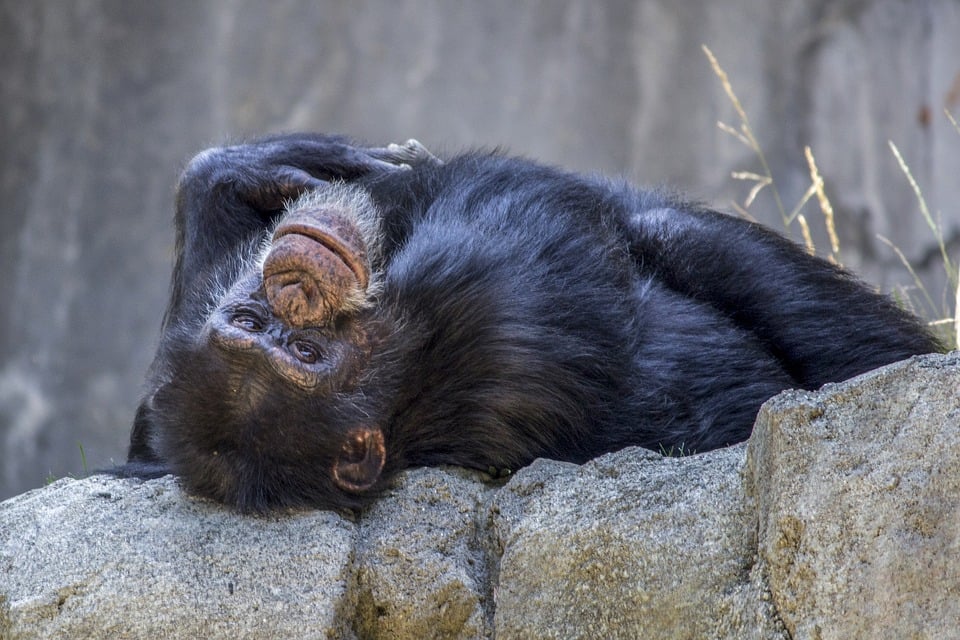
As a non-profit organization, Suncoast Primate Sanctuary in Palm Harbor is a volunteer-run sanctuary that has served as a home to more than 120 formerly abused, forfeited, or abandoned exotic animals. The sanctuary is maintained by more than 100 volunteers alongside over 200 students trained as vet techs. Most of the animals that can be encountered in the sanctuary are usually unwanted pets, victims of the exotic animal trade, formerly from medical facilities, or those that have retired from the entertainment industry.
Established in 1954, Suncoast Primate Sanctuary has grown from initially being a safe haven for three chimpanzees that had retired from show business. In its 68-year history, the sanctuary relies mostly on donations received from the local community and local businesses. The sanctuary also receives over 40,000 visitors each year and has educational and teen programs in place aimed to spread awareness about animal conservation and care. These programs provide special opportunities for internships, volunteering, and even as a way to fulfill community service hours for young adults as ordered by the court of the Florida Department of Juvenile Justice.
When visiting the sanctuary, guests won’t just encounter different species of primates, but they can also view a variety of birds and reptiles in their natural habitat.
Yulee Zoos
White Oak Conservation

With over 17,000 acres of land, White Oak Conservation in Yulee is a one-of-a-kind conservation center that directs its efforts and programs toward animal care and conservation. Residents of White Oak include a variety of animals, especially those that have been classified as endangered or threatened. Eighteen endangered and critically endangered species live in the spacious and natural enclosures of White Oak, including rhinos, okapi, bongos, condors, dama gazelles, zebras, and cheetahs. The conservation facility also has antelope and buffalo, other birds, carnivores, equids, swine, and elephants.
Aligned with its conservation efforts, White Oak partners with local and international wildlife agencies and federal and state agencies for the release and recovery of animals, such as Florida panthers and grasshopper sparrows, Mississippi sandhill cranes, and whooping cranes. In May 2020, White Oak became the new home of a herd of female Asian elephants that have traveled with the Ringling Bros. and Barnum & Bailey Circus until their retirement in 2016. Aside from these elephants, you can also see dragonflies in White Oak, which you won’t find in the cities.
Kenansville Zoos
Wild Florida Drive-thru Safari Park

If you want to put a spin on the typical road trip, then driving through the Wild Florida Drive-thru Safari Park in Kenansville might be just what you’re looking for! Here, you can have a wild car ride that lets you encounter over 150 native and exotic animals roaming freely across 170 acres of natural scenic landscapes. Some of the animals you can see during your drive include giraffes, zebras, scimitar oryx, eland antelope, American bison, mouflon sheep, and a host of other fascinating and exotic creatures. The exciting thing about the drive-thru safari is that while you’re in your vehicle, you can still have close encounters with the animals.
Aside from the four-mile safari drive, you can also enjoy other activities, like visiting the Gator Park, which is included in the ticket admission prices for the drive-thru safari experience. You won’t need a vehicle to explore Gator Park, but you will get to see another 200 animals and experience a variety of educational shows, such as the Exotic Animal Show and the Gator Feeding Show. The Gator Feeding Show demonstrates just how quick and powerful American alligators are, and you might even see Crusher, the biggest American alligator in the park that weighs over a thousand pounds.
Another non-vehicle ride is the giraffe feeding experience, where guests can feed giraffes from an elevated feeding platform.
Panama City Beach Zoos
ZooWorld Zoological Park

Have you ever held a kangaroo, pet a porcupine or a sloth, snuggled a lemur, or even kissed a giraffe? At the ZooWorld Zoological Park in Panama City Beach, you can do all those and more!
With over 350 animals and 259 species of plants, ZooWorld is a great place to visit for a family outing. Kids and adults alike will enjoy a variety of animal encounters that lets them get up-close and personal with different species. Some of the park’s featured experiences include holding a kangaroo and feeding baby bearded dragons, snuggling a lemur (which is considered an endangered species), feeding more than 80 giant alligators at the park’s Allapattah Swamp, feeding giraffes (and even getting to kiss them!), and walking through a free-flight aviary with budgies and hundreds of other colorful exotic birds.
Aside from these, you can also play with the goats, and you’ll be able to feed llamas and baby zoo animals. A new exhibit was unveiled in 2021, where the immersive exhibit for Madagascar lemurs has been renovated to quadruple their living space. Adults can also have a lot of fun practicing their throwing skills at one of the park’s newest attractions, the Hatchet Throwing Experience.
Zoos in Florida Recap
More than just its warm climate and beautiful beaches, Florida offers a variety of zoos where both locals and tourists can encounter and explore different animal species. From zoological parks to conservation facilities, sanctuaries, aviaries, and even a serpentarium, you can have a fun wildlife experience when you visit the best zoos in Florida.
Some of the zoos listed above may require advance booking due to COVID-19 concerns, but many are also open to the public and accept general admission. Check out any of these Florida zoos today if you’re going to visit the wonderful cities of the Sunshine State.
Looking to explore Florida? Here are some other great things to do in the state:



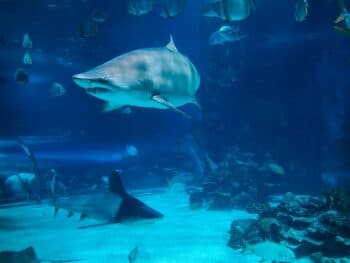





 Zoos in Georgia
Zoos in Georgia